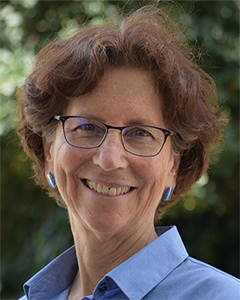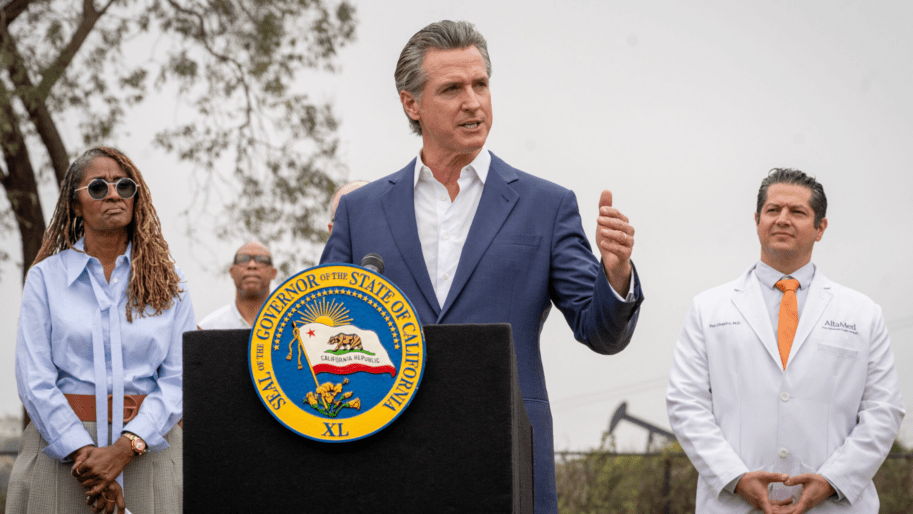The California Legislature ended its 2025 session on Saturday. All in all, despite some setbacks, we made more progress than I thought possible.
I am very proud of the collaborative leadership role The Climate Center played, especially in light of the federal administration’s efforts to dismantle climate and clean energy policies and slash funding. The governor has until October 13 to sign these bills.
Progress towards building the Grid for the Future
Several foundational clean energy bills passed, including AB 740 (Harabedian), co-sponsored by The Climate Center. AB 740 will accelerate the use of virtual power plants, networks of distributed energy resources like smart thermostats, rooftop solar, and batteries in homes and electric vehicles that can reduce strain on the electrical grid by storing energy and delivering it back to the grid during peak demand hours, potentially saving California billions.
Some of the other energy bills we supported that await the governor’s signature include:
- AB 44 (Schultz) will make it easier for distributed energy resources like solar and batteries to lower electricity costs.
- AB 1167 (Berman) and SB 24 (McNerney) will help stop investor-owned utilities from using ratepayer funds for lobbying and political advertising.
- AB 39 (Zbur) will help local governments prepare for zero-emission vehicles and all-electric buildings by developing and adopting electrification plans.
Investing in nature-based climate solutions
We are pleased that SB 279 (McNerney), co-sponsored by The Climate Center, is on its way to the governor’s desk. This bill expands on-farm and community composting, which is essential for drawing down atmospheric carbon, improving soil health, increasing food and water security, and reducing planet-warming methane.
Other priority bills passed that advance natural climate solutions include:
- SB 105 (Wiener) appropriates more than $3 billion of the $10 billion climate bond — approved via Prop 4 last year — to invest in extreme heat mitigation, wildfire resilience, clean air and water, climate-smart agriculture, and nature-based solutions. This was signed into law by the governor on September 17.
- AB 399 (Boerner) authorizes blue carbon demonstration projects to demonstrate and quantify the carbon sequestration potential of wetlands and near-shore habitats.
Extending California’s signature climate program, Cap and Invest
California lawmakers extended California’s flagship, yet faulty, Cap and Invest program (formerly known as Cap and Trade) to 2045 via AB 1207 (Irwin). The legislature also passed SB 840 (Limón), which establishes a framework for spending the revenue generated by the sale of pollution allowances through the Greenhouse Gas Reduction Fund (GGRF), including $1 billion annually for the state legislature to appropriate. The GGRF has the potential to provide billions of dollars each year to support clean energy, housing, wildfire prevention, and natural climate solutions.
We were happy to see some of our recommendations included in these bills sent to the governor:
- Keep offsets under the pollution allowance cap (so polluters can’t use offsets to pollute more than the allowance cap);
- Require state regulators to re-evaluate the impact of offsets in cutting climate pollution;
- Prioritize nature-based solutions to both cut and draw down emissions while increasing resilience to growing climate extremes; and
- Increase the climate credit payments to households to help make soaring electric bills more affordable.
The carbon market responded positively with higher prices after the bill language came out last week. However, the legislature missed an opportunity to significantly improve the Cap and Invest program — to cut air pollution in frontline communities, address affordability, and fund more climate action. There were no specific funds allocated for distributed clean energy or EV incentives, and the almost $1 billion in free pollution allowances given to Big Oil every year continues, at least for now.
We strongly oppose SB 237 (Grayson), passed as part of a last-minute, six-bill package released last week, allowing for no amendments and little time for public review. This bill purports to stabilize gas prices by allowing for more oil drilling in Kern County, where communities already suffer from the worst air pollution in the country. Many analysts find it unlikely that such a strategy will result in stabilized gasoline prices.
While this year’s legislative session was far from perfect, our coalition efforts successfully fought back against some of the worst giveaways being pushed by Big Oil and Big Utility lobbyists.
I greatly appreciate everything our supporters do to advance accelerated and equitable climate progress. And thanks for joining me in urging Governor Newsom to sign both of The Climate Center’s co-sponsored bills, AB 740 and SB 279.
This blog first appeared in The Climate Center’s bi-weekly newsletter. To keep up with the latest climate news and ways to take action for a climate-safe future, subscribe today!


